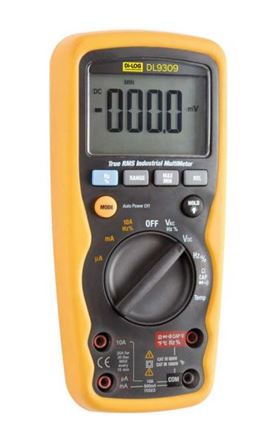A multimeter is a brilliant instrument that combines several functions – typically, measuring voltage, current and resistance. Although both digital and analogue multimeters exist, the vast majority in use today are digital and hence this guide will use images of a digital multimeter, or DMM, to illustrate various steps.
Getting Started With a Multimeter
To begin, let’s have a quick look at the multimeter and what all of those dials and symbols actually mean. Below are the basic settings options you will find on most DMMs:
- Voltage Type Selection – your DMM may be labelled with ‘V AC’ and ‘V DC’ to choose between alternating and direct current, or these may be represented with ‘V -’ (direct) and ‘V~’ (alternating).
- Amperage Unit of Measurement – you will normally be able to select to have the amperage shown in amps (A), microamps (uA) or milliamps (mA).
- Measuring Resistance – you will have an option to measure in ohms (Ω), the unit of resistance.
Now, let’s move onto the practical part! First, you need to plug your probes into the multimeter. Plug the black one into the COM (common) slot and the red one into the slot marked with the Ω symbol.
Be aware that the black probe is usually connected to ground or negative “-”, and the red one to power “+”. Don’t worry if you plug the black and red probes in the wrong slots, all that will happen is that you will get a negative reading.
How to Measure Voltage
We will take an AA battery as an example. Turn you DMM onto the DC voltage section. An AA battery voltage is approximately 1.5V, so turn your multimeter to 2V DC (slightly higher than you expect the reading to be).
Take your probes and place them against the positive and the negative terminals of the AA battery. Remember that your black probe should be on the negative terminal and the red on the positive one. You should see around 1.5V on your multimeter’s screen if you have a new battery.
That’s all there is to it – you have just measured the voltage of an AA battery! This theory remains the same for every device you want to test.
For more detail: How to Use a Multimeter

